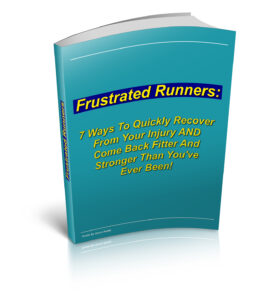DO YOU HAVE PAIN DURING RUNNING?
Running has become the most popular form of physical exercises over the past decade.
It’s all about how to manage pain during running.
Initiatives such as the Park Run have boosted the number of runners on our roads. We at Gav Noble Physiotherapy are glad to see more people become active and improve their physical and mental well-being. However, increased activity levels comes with an increased risk of sustaining an injury. Research into running related injuries suggests that novice runners (less than 1 year running) are more at risk of injury in comparison to experienced runners. The research has also highlighted that 9 in 10 runners training for a full or ½ marathon sustain an injury. 80% of running related injuries are caused by overuse (This is good news because this means they are preventable). The most common areas where running injuries sustained are:
- Lower Leg (Achilles Tendinopathy, Plantar Fasciitis, Shin Splints, Soleus/Gastroc Strain)
- Knee (Patellar Tendinopathy, ITB Syndrome, Patellofemoral Pain Syndrome, Meniscal irritation/tear)
- Hip (Gluteal Tendinopathy, Greater Trochanter Pain Syndrome, Osteitis Pubis, Hamstring/Quad Strain)
- Lower Back (Mechanical Back Pain, Nerve Irritation)
WHAT IS PAIN?
“An unpleasant sensory and emotional experience associated with, or resembling that associated with, actual or potential tissue damage,”
There are two main types of pain Acute and Chronic. Acute pain is normally associated with a sudden onset where patients can recall a mechanism of injury or an incident that caused the pain. Acute pain is common in muscle strains, ligament sprains and fractures etc. Chronic or persistent pain is generally associated with a gradual onset. Normally patients cannot recall a mechanism of injury or an incident when the pain first started. Chronic pain is mainly related to overload injuries such as tendinopathies.
WHAT SHOULD I DO IF I HAVE PAIN DURING RUNNING?
Firstly, I would advise that you arrange for a physiotherapy assessment within our clinic. Even if the pain is minor. It is easier to manage low intensity pain rather than pain that has been allowed to prolong and intensify. Secondly it is important to identify which type of pain you have. In cases of Acute pain, where you can recall a sudden onset and a mechanism of injury you should employ the POLICE protocol immediately.
Protect
Avoid any aggravating activities. This does not involve complete rest or immobilisation. The goal is to prevent further tissue damage. If there is a wound protect it from infection with appropriate bandages
Optimal Loading
The goal of optimal loading is to stimulate the tissue healing process. Depending on the severity of the injury this could mean non/partial weight bearing or full weight bearing. In most cases of injury complete rest is not ideal for tissue healing. Tissues respond well to load. A general rule to follow is ensuring that your pain does not go above a 4/10 with 10 being the worst pain imaginable (this is not applicable in all cases of injury).
Ice
Cold therapy has been suggested to reduce tissue metabolism and cause a constriction of the blood vessels to reduce swelling. It can also decrease the prorogation of nociceptive nerve stimuli to the brain which can reduce pain. However, cold therapy is not always required. Cold therapy has been recently suggested to delay the healing response of tissues due to the reduction of inflammation. A general rule to follow is if the injury is beginning to swell and you are in pain greater than 4/10 you should apply cold therapy. The application of ice should be performed for 20 minutes every hour for 2-4 hours initially, ensuring you have a layer between the ice and the skin to prevent burns.
Compression
The goal of compression is to prevent further swelling. You should use an elasticated bandage to provide a comfortable compression without increasing pain or obstructing the blood supply.
Elevate
Elevation is another method of reducing swelling. For appropriate elevation the lower leg should be raised above the level of the pelvis.
Manual therapy treatments can also help reduce the intensity of symptoms within this early stage. However, once the initial symptoms begin to subside it is important that you progress the optimal loading through rehabiliation exercises. Rehabiliation is a gradual process to return you to running in the quickest and safest way possible to prevent injury recurrence.
Chronic pain can be caused by an array of external and internal factors. To identify the cause of chronic pain you should seek a physiotherapy assessment. Common causes of chronic pain is poor biomechanics, muscle imbalance/weakness or training overload etc. Runners have a miss conception of physiotherapists. The main worry of runners is that they will be told to stop running. However, we at Gav Noble like to work with our runners to keep them active. In cases of chronic pain there may be the opportunity to perform low milage while managing the symptoms of injury. We will only advise off-loading from running when the symptoms cannot be managed through reduction of milage.
TAKE HOME MESSAGE:
- Listen to your body! If it doesn’t feel right, it probably isn’t
- In cases of Acute pain employ POLICE protocol
- In cases of Chronic pain reduce miles to manage symptoms
- Speak to our physiotherapists. It is our goal to keep you running in the best possible shape
- Orthotics can help improve running mechanics to reduce cases of chronic or intermittent pain
I hope you find this information helpful and if you have any further queries please do not hesitate to contact me at: info@gavnoble.com. Why not sign up to our online injury prevention for runner workshop due to take place (DATE FOR WORKSHOP).
You can download our frustrated runners report HERE
GOOD LUCK WITH THE TRAINING!
